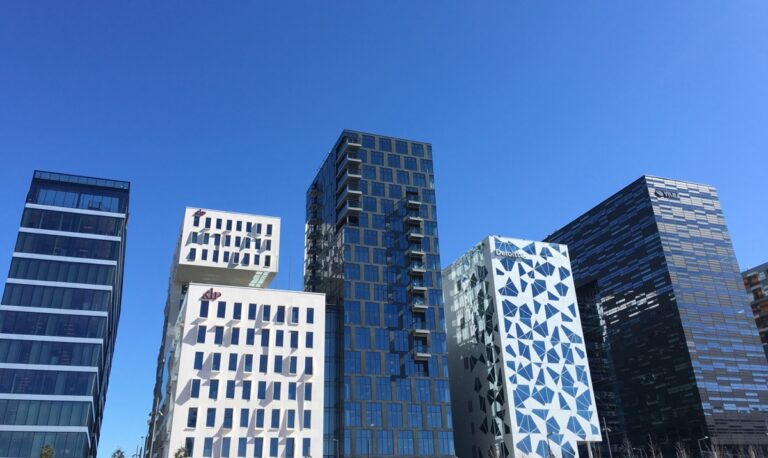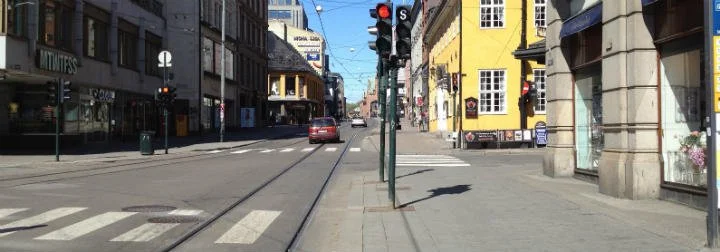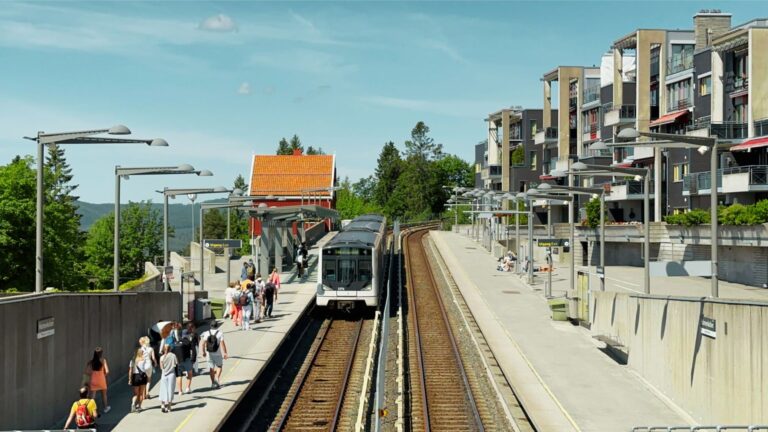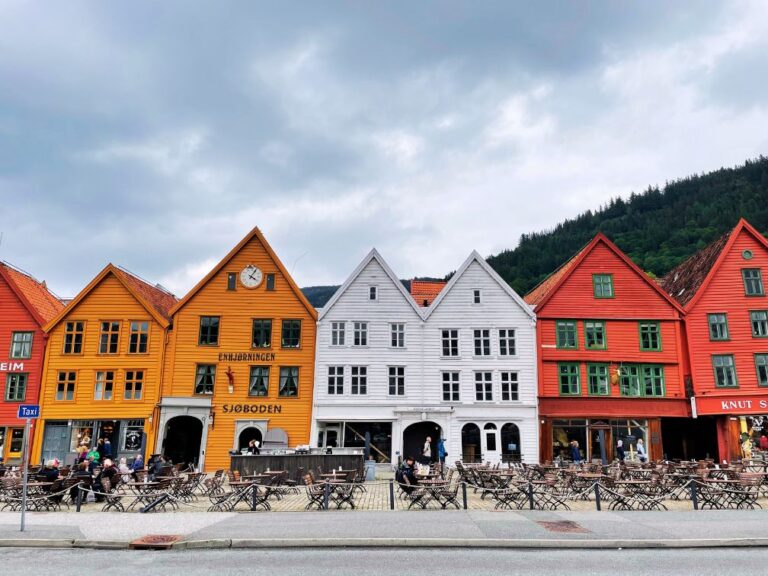If you're about to take a business trip to Norway for the first time, there's a few things you should know. Here’s our guide for business travellers planning a visit to Norway.
Norway is home to many international companies, most notably in the fields of oil and gas, energy, maritime, and seafood. As such, many professionals visit Norway on business trips.

If that’s you, welcome! I hope you’ll have time to explore our lovely country when your meetings and/or conference is done. If not, read on anyway, as there’s a lot to understand about business culture in Norway.
If you do have time, we’ll also recommend some top things to do with your spare time.
Attitudes Towards Work in Norway
Firstly, and perhaps most important of all, you must understand that Norwegians work to live rather than live to work.
This results in many workplace behaviours that can surprise international visitors, especially from across the Atlantic. The working week is short. 37 hours is normal and never above 40. Read more about working culture in Norway.
Family comes first, so even senior managers will leave the office at around 4pm to be home for dinner with their family. Friday afternoons are often cut short as Norwegians like to spend their weekends up in the mountains.

Holidays are extensive. Almost all employees receive five weeks paid vacation, of which three weeks can be taken together during the summer. In practice, almost all offices are ghost towns throughout the month of July.
Top tip: Don’t expect to start any meetings late in the afternoon. Also, don’t plan any meetings whatsoever on a Friday afternoon, during the school holidays, or throughout the month of July. Best avoid late-June and early-August too. Yes, we’re serious!
Equality in the Workplace
When compared to offices in other countries, Norwegian organisational charts are flat. In fact, there may not even be a published organisational chart.
Decisions tend to be made on a consensus basis. You do get used to this, but it can lead to frustrations in meetings when your Norwegian colleague wants to get the opinion of others before committing to anything.
But don’t let all of this mislead you. Norwegians do get their work done, but the focus is on the end result and not the time in the chair.
What to Expect on Your First Business Trip
Business dress is usually informal, and almost never anything more than smart casual. During the winter months it's common to leave your shoes/boots in a separate room, and change into comfortable trainers or even slippers to wear around the office.
Business lunches are short and efficient, generally involving topped open-faced sandwiches and almost never alcohol.

There will be an unlimited supply of coffee in any office. Norwegians, along with the other Nordic nationalities, consume coffee like the rest of us drink water. It tends to be taken black and is strong, so be wary of how much you drink.
The national attitude skews in favour of freedom of information. For example, the amount of income tax paid by an individual is a matter of public record.
This transparancy often extends towards business, where honesty trumps a smoke and mirrors approach in the sales process.
Travel Tips After Your Business is Done
Make the most of the short business hours by taking in some sights. In Oslo, check out the rapidly changing waterfront, the Royal Palace, Holmenkollen Ski Area and Vigeland Sculpture Park.
A 24-hour Oslo Pass is a good choice if you have a day to explore the main sights. This includes access to many attractions and a public transit pass, which you can use to take the city’s metro up into the forests surrounding the city.

Here, you’ll be able to get fantastic views of the city and the fjord below, and join the locals on the many hiking trails.
In Stavanger, make some time to potter around the cobbled streets and beautiful white wooden houses of the Old Town. Stop for lunch at the colourful Øvre Holmegate and look for some of the city's famed street art.
The Norwegian Petroleum Museum is a worthy inclusion in your itinerary, regardless of your industry. It tells the story of the industry and focuses not just on the economic benefits, but on the people, the technology, and even industrial disasters.
If you can tag on some personal time after your business is done, Bergen is packed full of cultural and historical attractions. Bryggen, a UNESCO World Heritage site, is a must-visit at the very heart of the city.
To get there, the Oslo to Bergen rail line is consistently voted one of the top railway journeys in the world.

Advance booking is recommended, as is considering breaking up the journey with a visit to Flåm in order to ride the world-famous Flåm Railway and get a glimpse of the impressive Aurlandsfjord. The ‘Norway in a Nutshell’ tour helps you put together an itinerary.
Further north, the dramatic Lofoten islands offer up the country's best natural scenery. If you’re visiting in the autumn or winter, consider heading north to Tromsø and joining a northern lights tour. You never know, you might just catch one of nature’s wonders.
Alternatively, use some time to explore the other Scandinavian capitals, Stockholm and Copenhagen, especially if your return flight routes you through one of those airports.
Do you visit Norway regularly on business? If so, what are your favourite things to do in your free time? I’d love to hear your thoughts and recommendations down in the comments.

